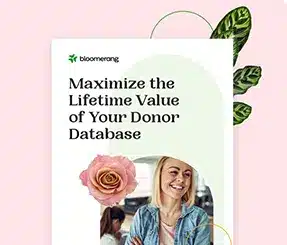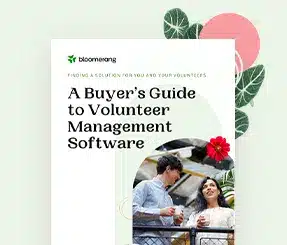How To Close Gifts Via Strategic Zoom Or Telephone Fundraising Appeals


Full Platform Overview Chat With Us



Full Platform Overview Chat With Us




Should you ask for and close gifts by Zoom? By telephone?
Indeed, you should!
Why? Because the number one reason people don’t give is that they aren’t asked.
And the more up close and personal you make your ask, the more likely you are to get a positive – and generous – response. Gifts will generally not come to you out of the blue.
Both Zoom and the phone are wonderful, personal ways to connect with folks in real-time, especially during this socially distanced period when face-to-face meetings just aren’t possible. In fact, many folks today, stuck inside, are feeling isolated. They don’t get enough socialization. They are actually starved for real, live human interaction and love.
Your job, as a philanthropy facilitator, is to offer that love. Remember, “philanthropy” literally translates from the Greek as “love of humankind.” And asking for a gift may be one of the most loving things you can do right now, while people are desperately searching for meaning, purpose, and connection in their lives.
It’s not enough to simply send an email. Folks’ inboxes are overloaded. Email solicitations have a shelf life of about 24 hours. If yours happens to hit your prospect’s inbox at a time they’re busy, they may just delete it without giving it a second thought. Or maybe it will go to their ‘promotions’ or ‘spam.’ It’s as if your ask never happened.
To close a gift, you’ve first got to get folks’ attention.
The sight of your face and the sound of your voice can work wonders in this regard. You’ll be able to see each other’s body language and hear each other’s tone of voice. Smiling. Leaning forward. Crossing hands across one’s chest. Nodding. All these things provide clues about the emotional intent behind your words and make a huge difference in your ability to communicate effectively.
Did you know that 55% of human communication is based on body language and another 38% on tone of voice? That leaves only 7% to “words”.
If you’ve ever worked in major gift fundraising, you know mailed proposals and emails can’t hold a candle to getting an in-person visit. In fact, fundraising legend Jerry Panas used to say when you’ve got the visit you’re 85% of the way towards getting the gift.
When you can’t get a face-to-face visit, what else can you do?
Due to the coronavirus pandemic, Zoom has become an overnight communication essential for many. It helps people keep in touch with family, friends, work colleagues, and even school, yoga classes, artistic presentations, religious services, and much more. Including your nonprofit!
Zoom is ‘in the house’ and here to stay for the foreseeable future. It’s a powerful new tool at your disposal, so why not take advantage?
Some 9% of adult U.S. citizens have their mobile devices within arm’s reach 24/7. More people on the planet own a mobile phone than own a toothbrush. Businesses find that expensive and complicated products need phone calls to be sold. It stands to reason that any request for a mid-range or major gift could also benefit from a phone call.
Only during a live conversation can you effectively address donor concerns and persuade them your organization merits their philanthropic support. Only through give and take can you address donor hesitations and reframe your solicitation, suggesting personalized giving alternatives that will close asks from potential donor prospects.
Here are some excuses I often hear around the telephone:
Here are some excuses I’m starting to hear around Zoom:
All these excuses can be overcome. And you’ll want to do so. Why? Because both these mediums use the human voice (and body language with Zoom) to authentically connect with people. In fact, you can even use a form of body language while talking on the phone if you smile, stand up while talking, and/or use hand gestures as you speak. And even if you get voicemail, you can still leave a message that exploits the expressive power of speech.
But… don’t forget you’re not just doing this to have a friendly chat. Certainly, you can do that as a stewardship or cultivation call. But for purposes of this article I want you to think specifically and strategically about asking for, and closing, philanthropic gifts.
A, B, C is common axiom among salespersons. It stands for “Always. Be. Closing.”
This assumes, of course, that you must always be asking—otherwise, there’s nothing to close.
To that “always” I would add, always ask every which way you can.
Or as hockey great Wayne Gretzky reportedly said: “You miss 100% of the shots you don’t take.”
Today you must take your shots with the tools at hand, and this includes the tools of the telephone and Zoom.
But before you can have a great donor interaction, I’d like to describe a newer framing of A, B, C. It’s borrowed from Daniel Pink, author of To Sell is Human. And, yes, he’s talking about sales and we’re talking about fundraising. They’re both about persuasion. They’re both about asking. They’re both about closing. Sales and fundraising are more alike than they are different. They both require the new A, B, and C.
ATTUNEMENT. BUOYANCY. CLARITY.
As described by Daniel Pink, these A, B, Cs are requisite skills for today’s world.
“Attunement is the capacity to take another’s perspective, to understand their interests, and to see the world from their point of view. Buoyancy is the capacity to stay afloat on what one salesman calls an ‘ocean of rejection.’ Clarity is the capacity to make sense of murky situations, to curate information rather than merely access it, and to move from solving existing problems to finding hidden ones.”
—Daniel Pink
The telephone and Zoom happen to be beautiful ways to deploy these closing skills as they enable you to:
With limited resources, the most strategic calls you can make are those most likely to yield the results you seek. So begin by identifying those folks likely to merit the investment of your energy at this particular point in time.
It’s always a good strategy to begin by asking yourself where folks are on their journey with your cause. The journey continuum goes from awareness of what you do … to interest in learning more… to some kind of active engagement… to making an investment. The further along the continuum folks are, the more likely they are to say “yes.”
Consider… might the phone or Zoom be a tool to move them to the next level?
At the end of the calendar year, or during times of crisis, you’re going to want to focus on getting to investment. In order of priority, current donors are your best bets. What’s great about a phone call is that you can have a real-time conversation that, ultimately, leads naturally to a meaningful fundraising ask. Conversations build relationships. One of my mentors, Hank Rosso, used to say: People don’t give to causes; people give to people with causes.
Know your objective going in. What are you trying to accomplish? What will success look like? Here are a number of possible strategic objectives that merit personal, focused attention:
It’s useful to have an outline for yourself, other staff, and any volunteers to whom you’ll assign calls. If setting up a Zoom meeting, you can do some of the rapport building in your email asking for a meeting. Whichever tool you use:
Remember, this is an outline and not a script! Don’t read it or you’ll sound like a robot. Speak in a manner that’s comfortable for you. And don’t forget to prepare mentally. Smile as you speak. Consider standing up and walking around to convey energy.
You want to go in expecting a “yes” but prepared to manage a “not yet” or “no.”
Donor prospects will exhibit common hesitations, so be prepared for them.
There is no such thing as a failed conversation as long as you’re genuine, helpful, and attentive. Listen. Wait for the prospect’s response. Empathize. Find out if this is the real reason for the hesitation. Suggest an alternative. Make another ask. Rinse and repeat. Remember your personal mission as a philanthropy facilitator is to build a relationship. If it doesn’t happen today, there’s always tomorrow.
Find a way to get up close and personal with at least one important donor prospect every day this week. It won’t take your whole day, and you’ll find it immensely rewarding.

Comments